Lost in the shuffle: that’s the only explanation for the lack of attention given the penultimate Indian four – dubbed the Model 44X – in the history books on Indian ‘motocycles’. Much better known is the post-war ‘Torque Four’, introduced in 1946 (but never manufactured), which is identified as part of the effort to streamline the manufacture of Indians under new owner Ralph B. Rogers. As the Torque Four was kin to the Indian singles and parallel twins produced under Rogers’ tenure (1945-53), it represented the ultimate expression of the modular manufacturing concept he championed. The Torque Four is known to have been primarily the work of Indian designer George ‘Briggs’ Weaver, designed when he worked with the Torque Corporation during WW2, after leaving Indian during the war. What’s less known is that Weaver designed, alongside Indian owner E. Paul duPont, an earlier four, dubbed the 44X, starting in the late 1930s, that was intended to be produced along the same principals as the Torque Four and post-war Indian lightweight lineup: as a modular series of singles, twins, and fours that used common components for more inexpensive production. Thus, the original concept and prototypes for the modular Indian lineup was dreamed up by E. Paul duPont and his team in the 1930s, developed by Briggs Weaver, and ultimately produced under Rogers in the late 1940s.
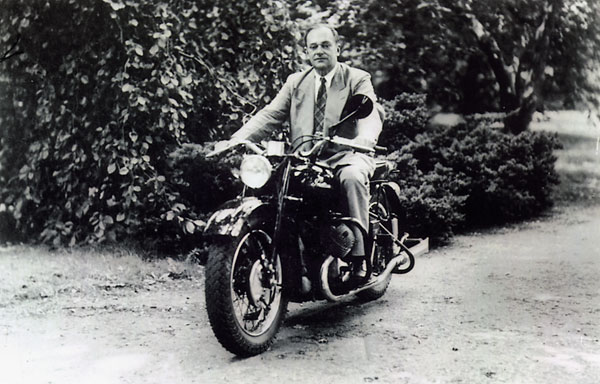
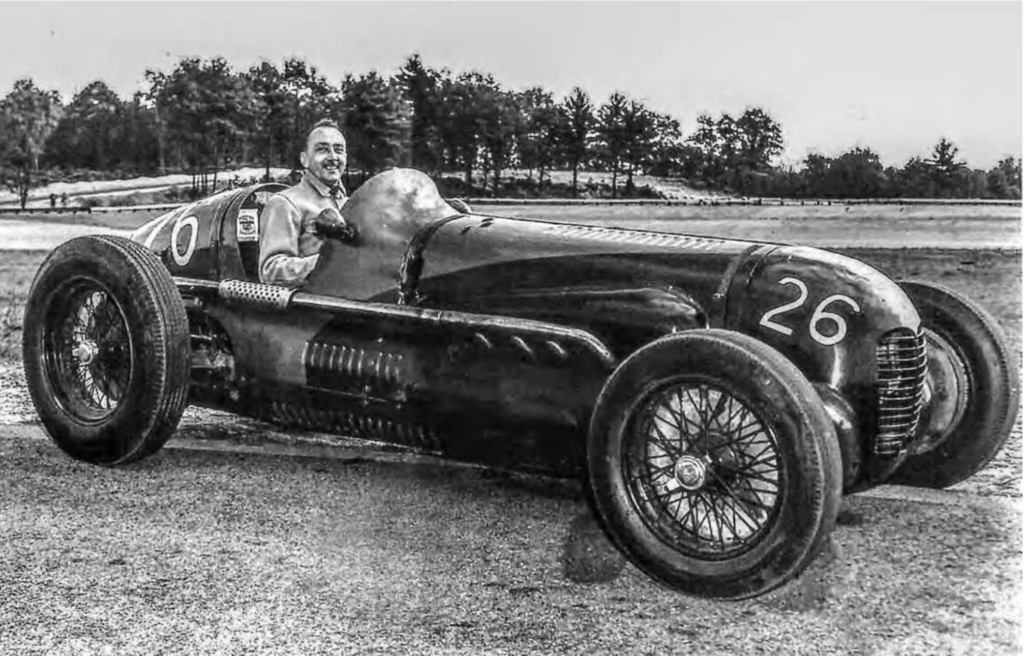
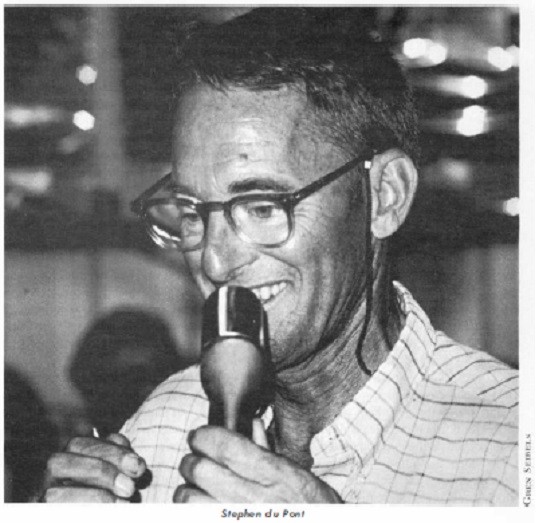
“In the late 1930s E. Paul duPont, then President and Chairman of the Board of Indian Motocycle Co in Springfield MA (notice the spelling Motocycle) initiated a plan for a new line of motorcycles. The aim was to come out with a line of motorcycle which would simplify the manufacture of engines and frames. An illustration of the problem is that the 45 cubic inch Scout and the 74 cubit inch Chief models each used a pair of cylinders that were not alike, and were different for each engine and the valve gear was different for each cylinder, in that each engine used four different rocker arm forgings. The connecting rods were a fork and blade rod and different for each engine. The Indian four of course had totally different valve gear and cylinders and pistons and roads compared to the already mentioned twins. The frames, brakes etc. were also different from model to model.
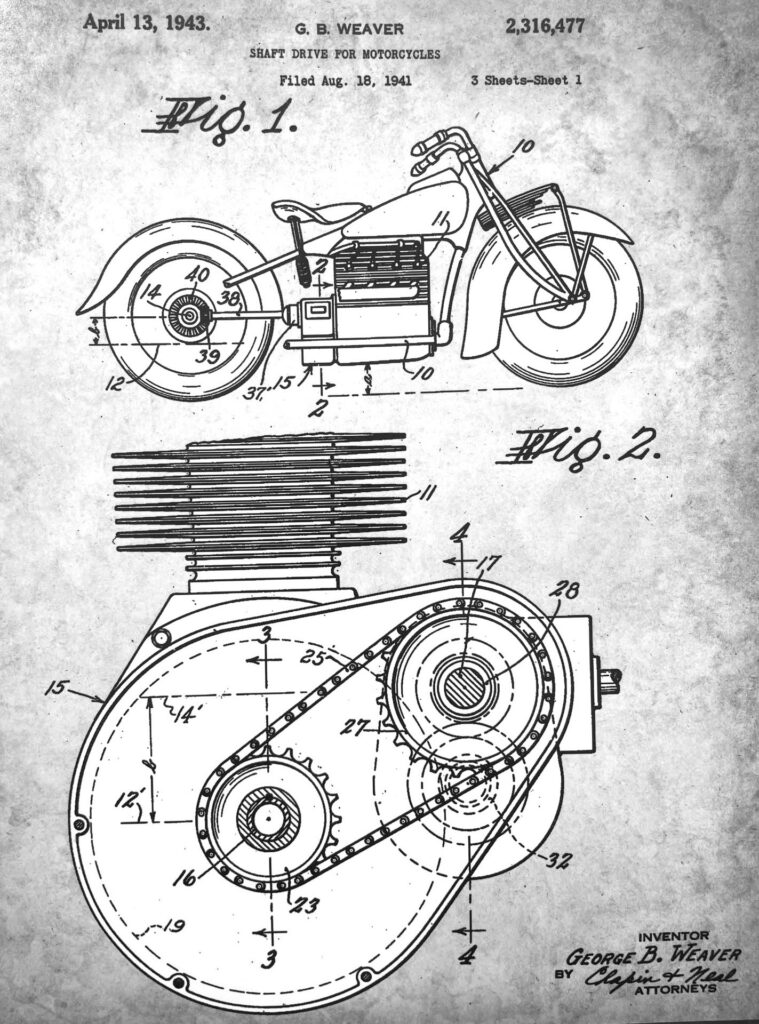
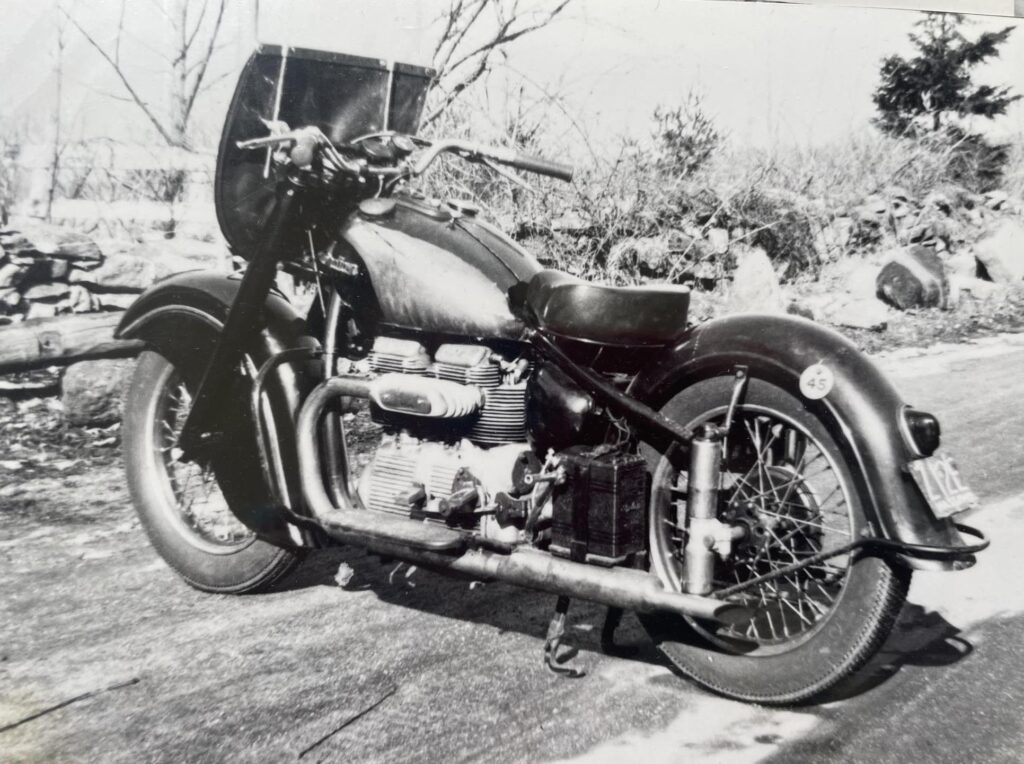
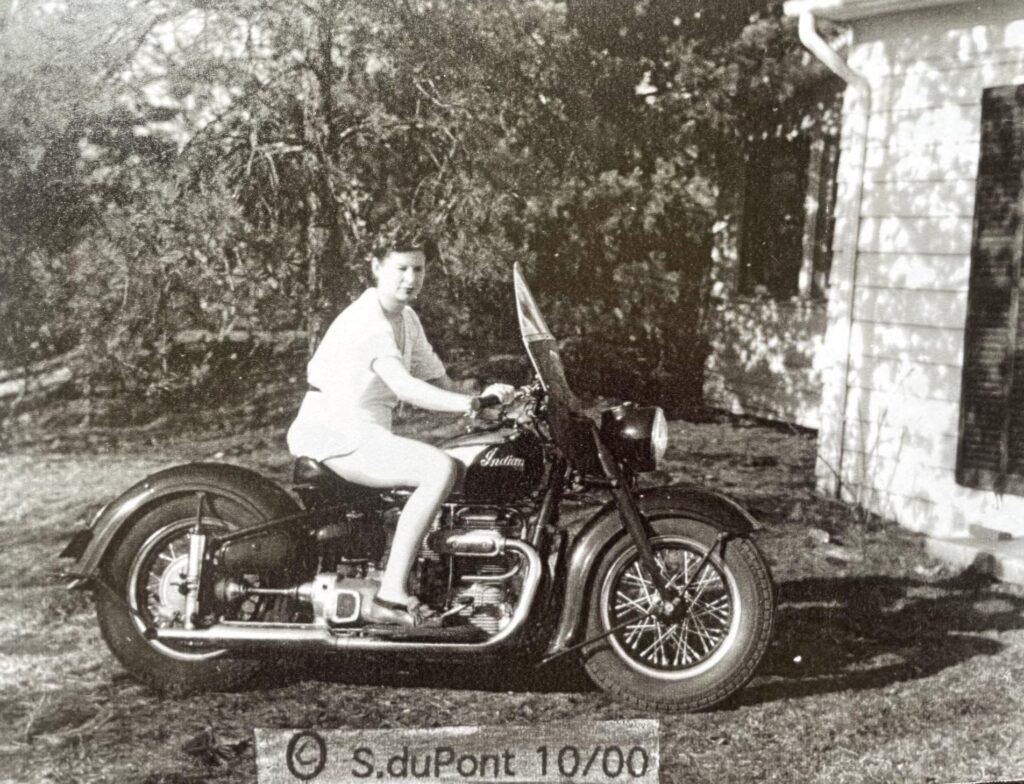
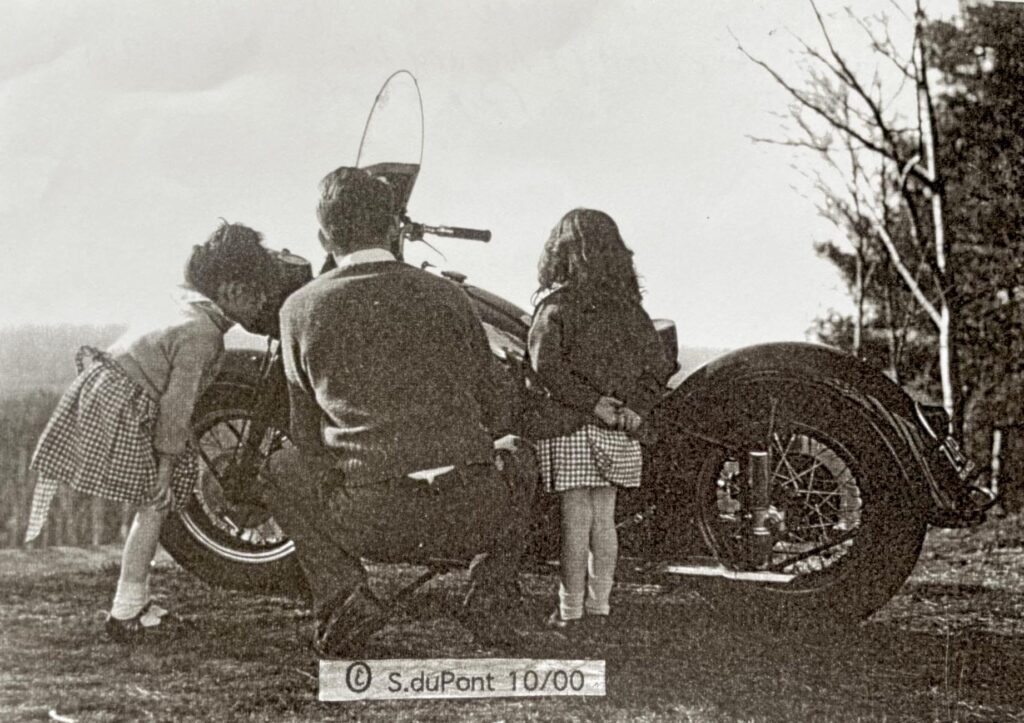
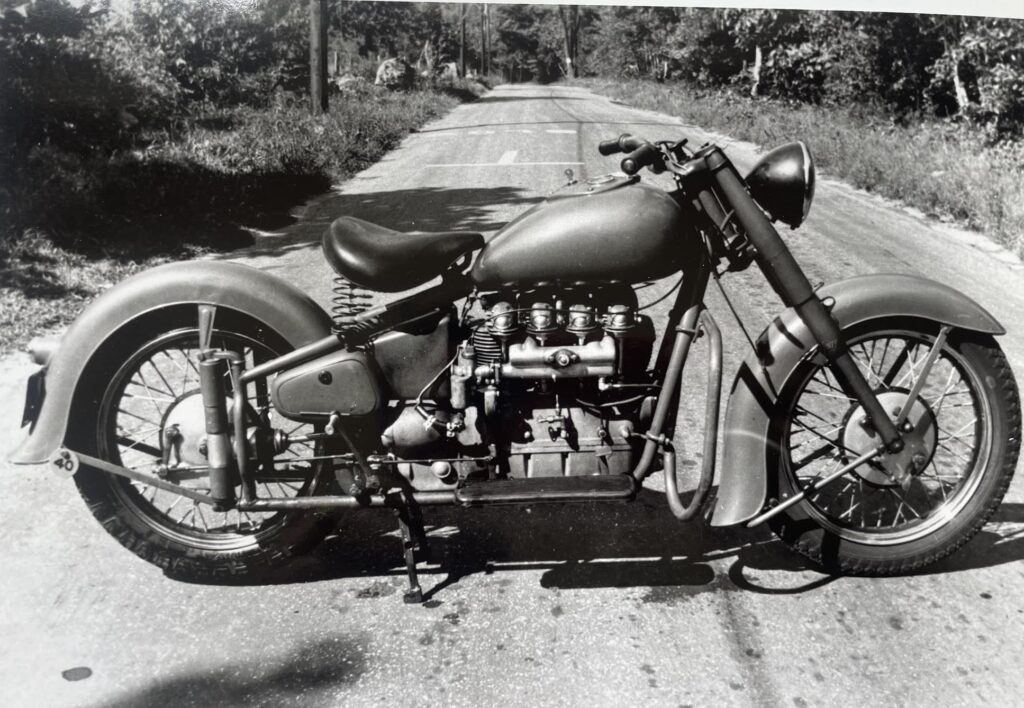
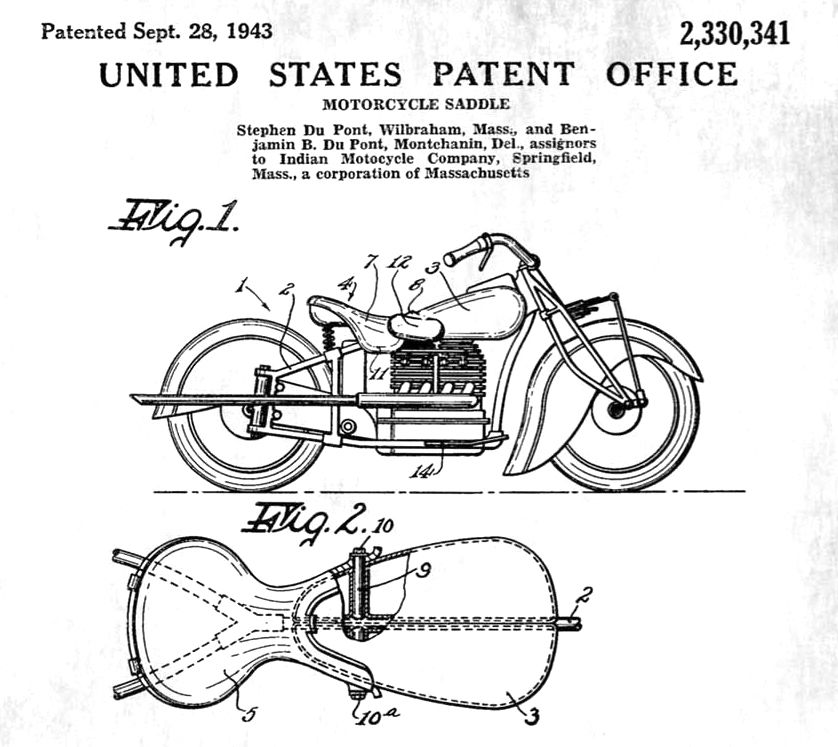
Note: The Stephen duPont transcript and several of his photos were sourced via the Jerry Hatfield Archive, which is being integrated into The Vintagent Archive. Keep an eye out for more Indian history!
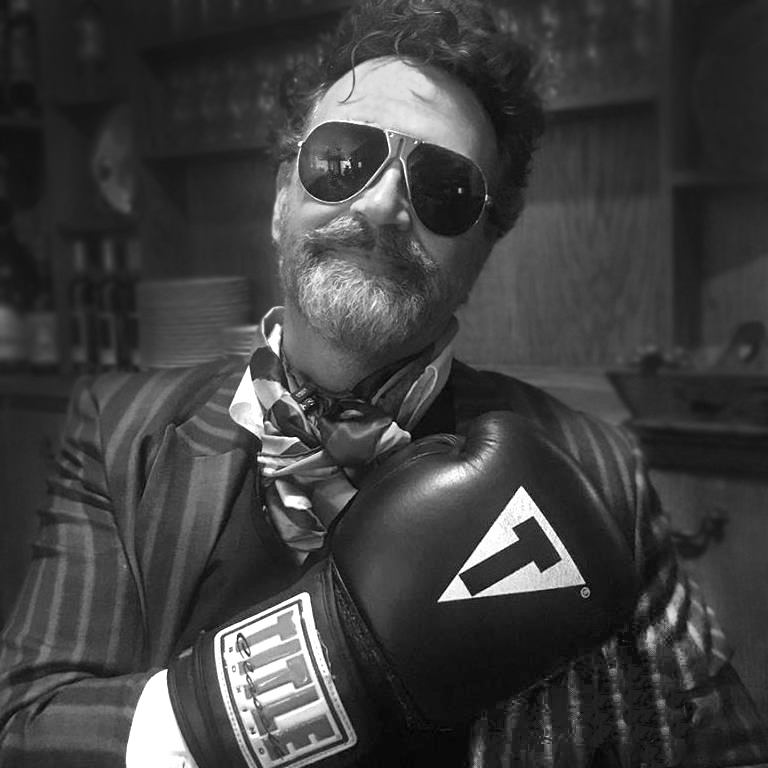

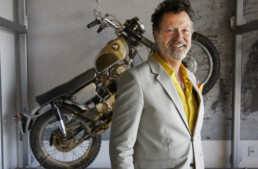
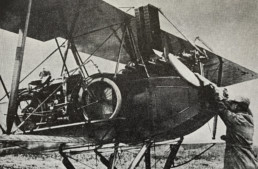

Two thumbs up . And for a bit of contrast … you should feature Grabowski’s Indian Four bobber .
Ahhh … but can anything top that Indian Four chopper you featured a bit ago …. nah … never mind … chopper … hands down
😎
Great article. One correction: the photo of the Maserati shows George B. Weaver, who is G. Briggs Weaver’s son. George and his wife Barbara founded Thompson Raceway in Thompson, CT—the first closed course road course in the US, and was the original members (card #1) of the SCCA.
A number of years ago I had a conversation with Stephen DuPont. He showed me two photos of him sitting on 44X. One was taken in the factory when it was new. At that time, it was equipped with the 841 girder front fork and military fenders. The other one was from 1998. I would love to have a copy of the first photo. Also, several years ago I ran across a site that displayed a photo of the 44X engine as a quiz to see if anyone knew what it was. Unfortunately, I did not archive the site or copy the photo. I would love to have that one too if it is available anywhere. Thanks for hosting a very informative site.
Hi Chuck, I just discovered the shot of him on 44X when new in the Hatfield archives (which are a mess, sadly), and will share it once it’s scanned.
yours, Paul
It’s worth noting that historical accounts sometimes focus more on the models that actually made it into production and had a significant impact on the motorcycle industry. This could explain why the Model 44X might not have received as much attention in history books compared to other more prominent models like the Torque Four.
I am Stephen duPont’s son, also Stephen. I just want you to know that a reason Dad was not in the war like his brother Jacques, is that he was blinded in his left eye at the age of 15.